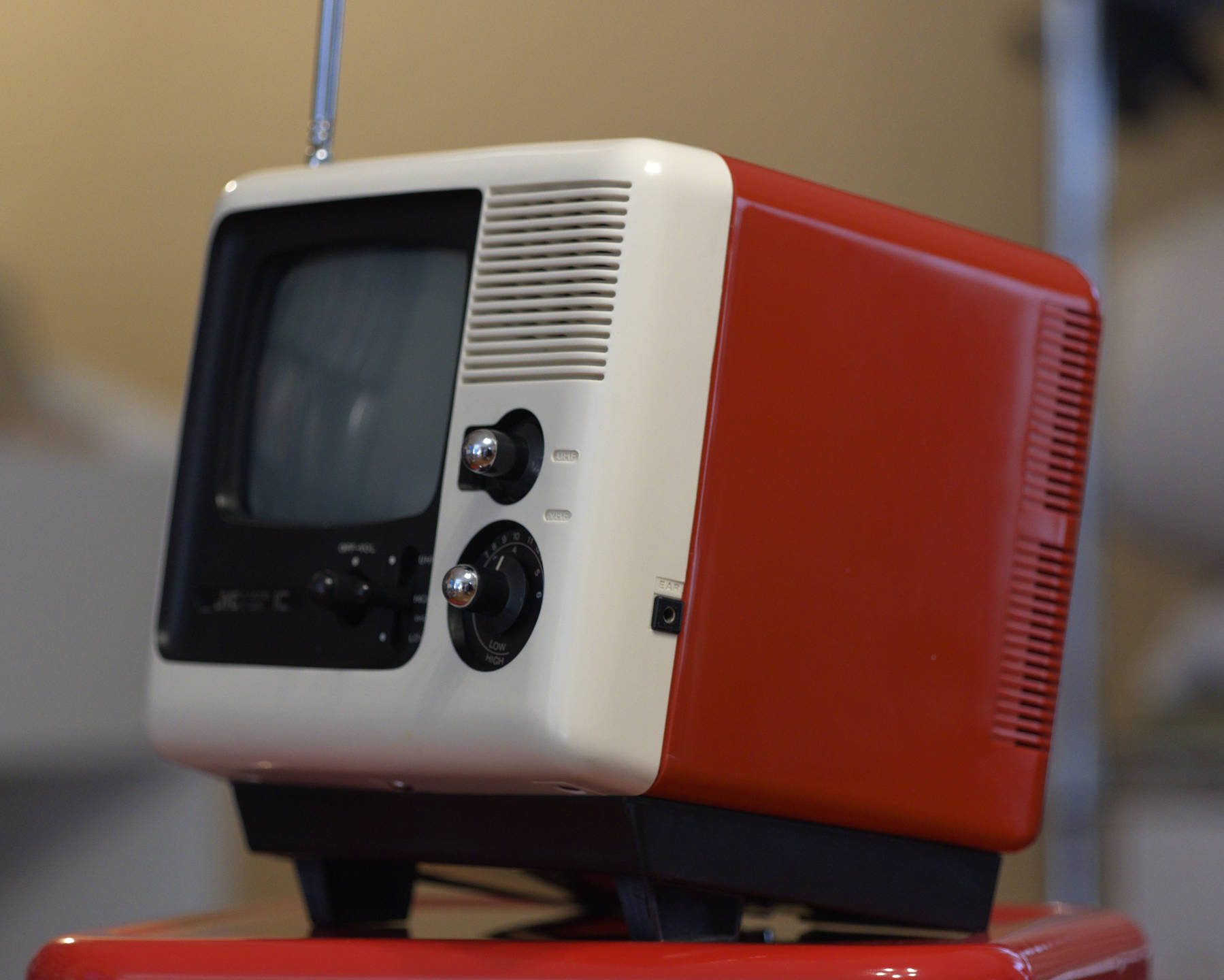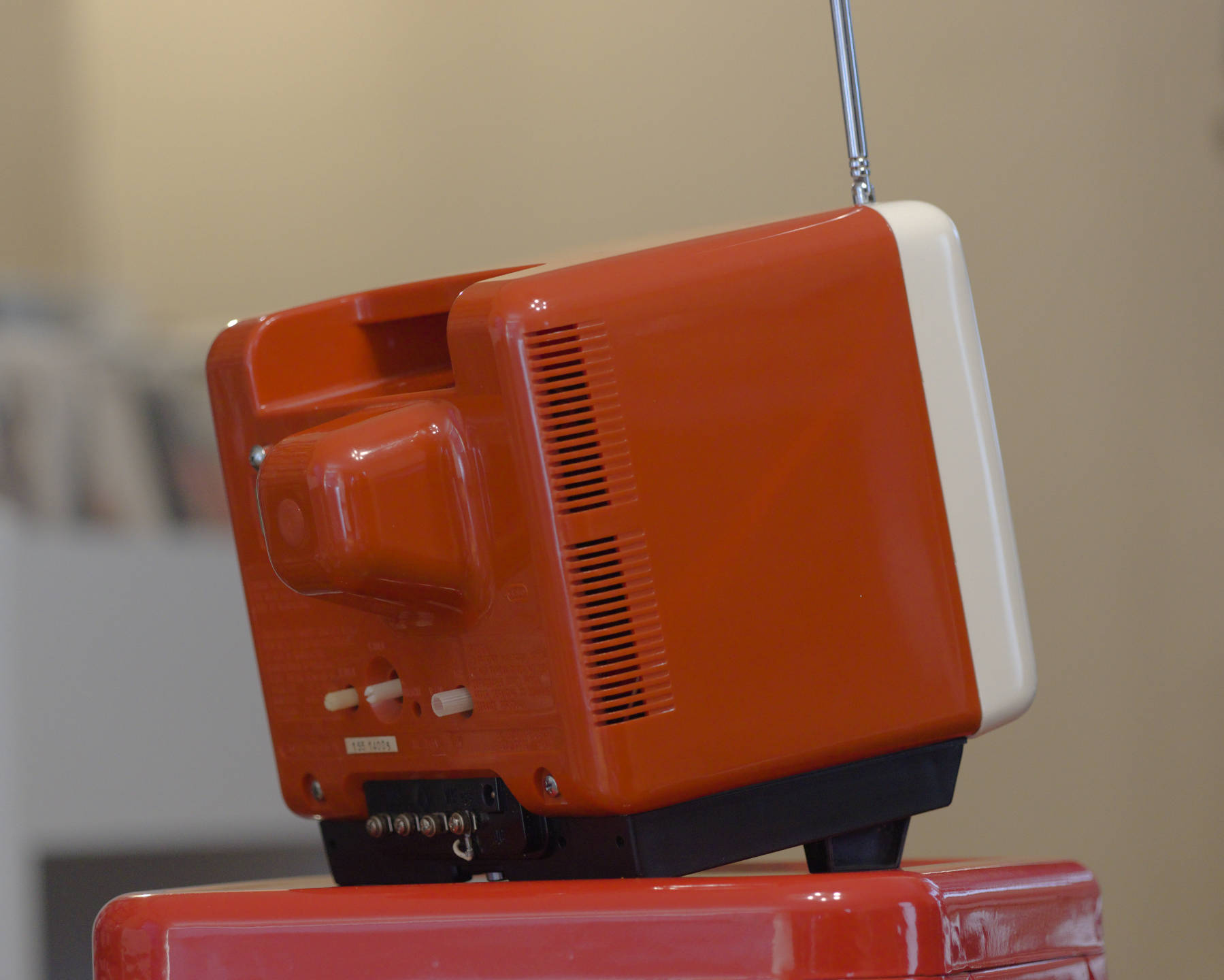
Yesterday's Portable Future
By Weltraumbesty / KRP, 11th of January 2025
///

Hurtling forth from the space age and presented for your approval, fresh from the Japan Victor Corporation of fifty years ago by way of an Iowa-based eBay seller of the middle 2020s, is this little light-weight marvel - the JVC Model 3020 IC portable television.
Best I can figure from the scant information available online, this set likely began production in the early 1970s (not long after the iconic JVC Videosphere), was produced for various world markets in several flavors (including a UHF-only UK model, among others), and cost who-knows-what at the time. More than I paid for it, certainly. Specifications are, predictably, well out of touch with current consumer expections, but are pretty slick for a device of the time. The all-plastsic housing, in stylish and soft-rounded red and white (with black inset for the tube mounting and various switches and knobs), allows the unit to be surprisingly light; around five and a half pounds / two and a half kilos. The user has some flexibility when it comes to supplying power (at the expense of another kilo or so in weight) - the 3020 IC can be sustained via a fat stack of 9 D-cell or equivalent batteries, installed in the bottom of the unit, or by way of a nifty removable 11.5V AC/DC power supply. The latter, something of a reverse wall-wart, is fully independent of the television itself, and loosely mounts to a screw on the back of the unit when in use.




The 3020 IC is also, true to its portable provenance, very small, a little under 9“ square (and less than 10“ deep even with the power supply affixed). The telescopic pivot-mounted antenna feels comically massive by comparison and is a little over a yard long when fully extended. My unit also arrived with a secondary wire loop antenna screwed into the television’s UHF connectors, which is designed to be snapped to the primary antenna when in use. Channel switching is by way of a pair of inlayed chrome-detailed knobs, and still operate with buttery smoothness on my set. Power-on and volume are a single combined dial, as was regularly the case on this generation of television sets, and it takes a satisfyingly tactile degree of force to turn the unit on or off (for which the user is rewarded an equally satisfying, equally tactile “click”). The choice of signal, UHF of VHF hi/lo, is by way of a toggle next to the power / volume dial, and is likewise tactile and definitive.

The rest of the specs may sound hilarious to much of anyone under forty, but for the use-case of the time (watching television on-the-go or, more likely, having a secondary set that could follow you around your home and property without taxing you too much for space or treasure) they're more than sufficient. Predictably for a set hailing from the era where color sets were only just beginning to outsell their monochromatic counterparts, the 3020 IC is black and white. Take it or leave it. Picture arrives by way of a 5“ tube tastefully set in a recessed black plastic frame (along with the power/volume dial, signal toggle, and branding). The quality of this diminutive CRT honestly surprised me. Once properly adjusted (the usual array of trims are available along the bottom of back of the set) that tiny little screen looks positively lovely, crunchy and granular and nicely punchy where playback material allows for it. I grew up watching a newer black-and-white portable that my grandmother had next to her kitchen table, and the 3020 IC well excedes my green-tinged and murky memories of that set.
Sound, again in keeping with the time in which this was designed, is monophonic only. Primary playback is by way of the set’s own internal speaker which, while far from terrible, offers about the dynamism you’d expect. A hi-fi product the JVC 3020 IC is not, though it was also never designed to be. I found it to be pleasant enough in my viewing, with decent volume levels and clarity. "Serviceable" would be an appropriate adjective. The set wins my heart again by offering a secondary option for listening by way of a headphone jack, installed along the right side of the set. Somehow a fifty year old portable television is ahead of current smart phone trends in this regard. I tested it briefly and found it to be just fine. This too is monophonic, in case that needed reiterating, so an adapter will be required if you want to (comfortably) watch along in stereo headphones.

A couple of other creature comforts are worth mentioning. The 3020 IC allows for a modest degree of viewing angle adjustment (nothing dramatic, but enough for most at-home use cases) by way of a pair of accessory feet, which snap easily into the bottom of the unit. The set has also been designed so that the top back of the body acts as handle, making it plenty easy to casually relocate. It also looks really, really cute. Nothing in today’s television marketplace comes close to competing with the 3020 IC in terms of its aesthetic sensibilities.
While it’s true that practical use cases for the 3020 IC, and indeed any analog broadcast television (portable or otherwise), are becoming fewer and further between, it’s important to consider it within the context of the niche it was designed for. How people watch the programming they want has never been and will never be as important as the ability to watch it, a truth the smart phone era has made abundantly clear. The 3020 IC, and sets like it, provided that kind of accessibility in a time when owning a home television required a significant investment and owning multiple full-size units would have been, to most families, an absurdity.

Also, a point of modern comparison. While all praticability may have passed it by, my JVC 3020 IC still works as well as I suspect it ever has. Digital may have taken over the airwaves, but I have more than enough analog gear cluttering up the house. It didn’t take long at all to connect a VHF-ready laserdisc player (a similarly obsolete, similarly flawless LD-V2000 from Pioneer) and put this set back into service. Before I had really thought about it I'd watched through a couple of discs (including Daiei Video's 1984 disc of Giant Monster Gamera, pictured, which was minted from a period-appropriate pan-and-scan TV master). It was a lovely time, and a welcome respite from my actual television set, a 50“ Bravia that seems to incrementally decline with every software update. That set is less than three years old and, perhaps by design, already itching for replacement. Meanwhile the 3020 IC just does it’s job. Dutiful. Reliable. Blessedly free of any of my Bravia’s questionably named “smart” functionalities. It just works.
And it looks damn good doing it.
///
~ Weltraumbesty / KRP
← previous // home ↵ // next →
if you enjoyed this shit then please consider throwing us a buck or two. we wander the wastes of intergalactic space in search of a new home, free from war and traffic accidents, and are powered by coffee alone. thank you.
© Weltraumbesty